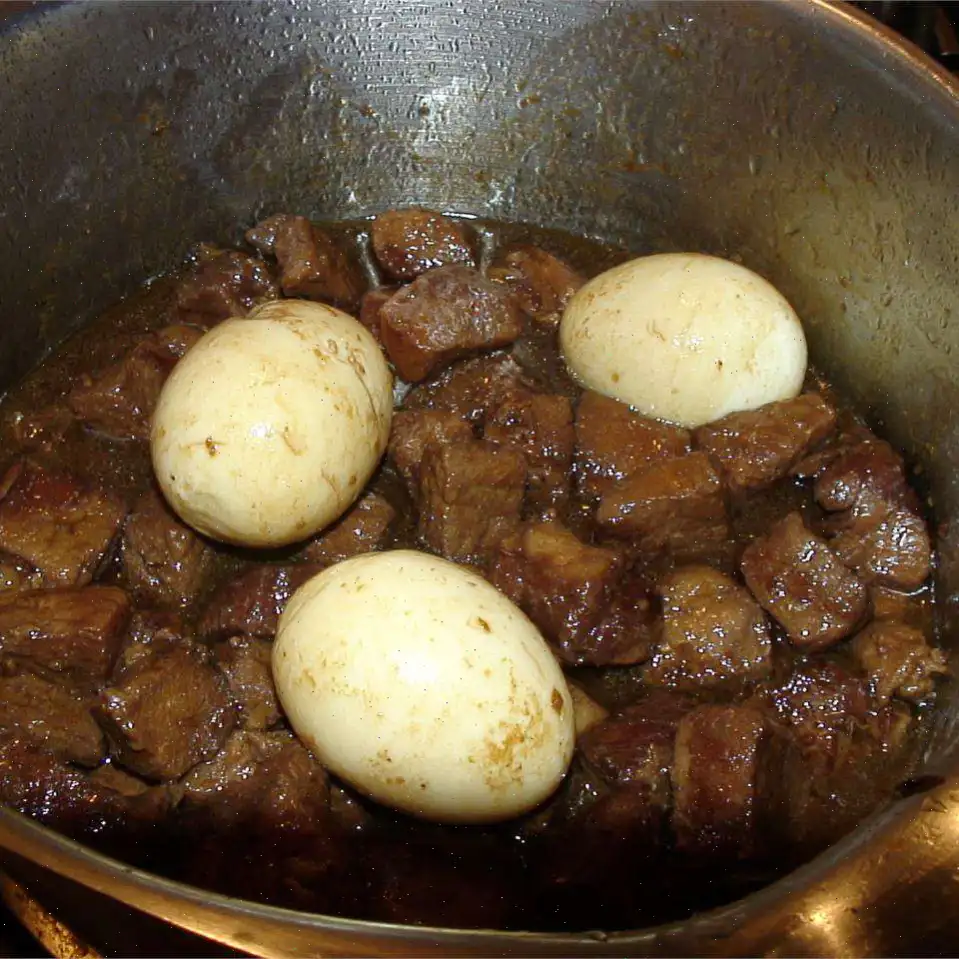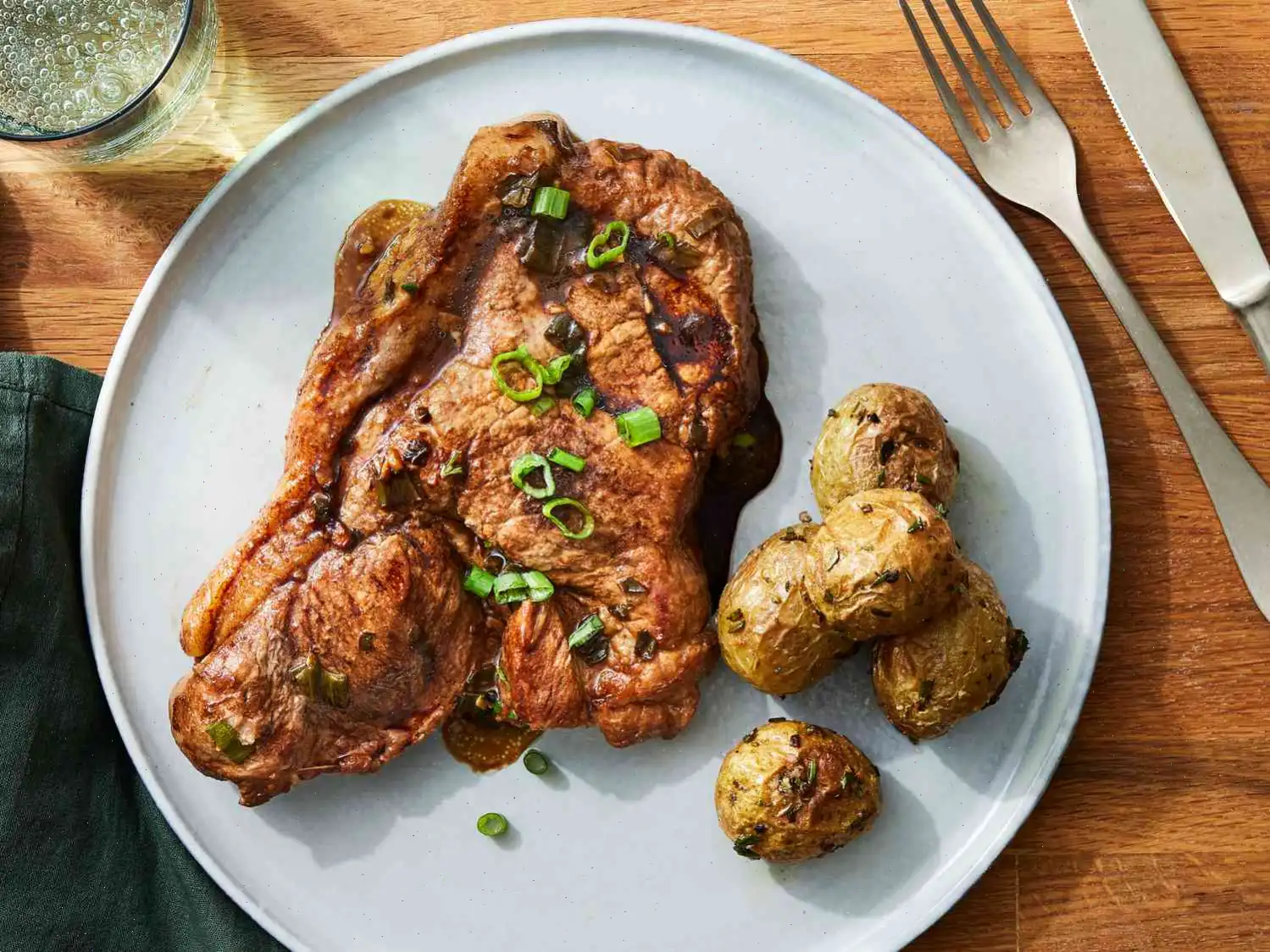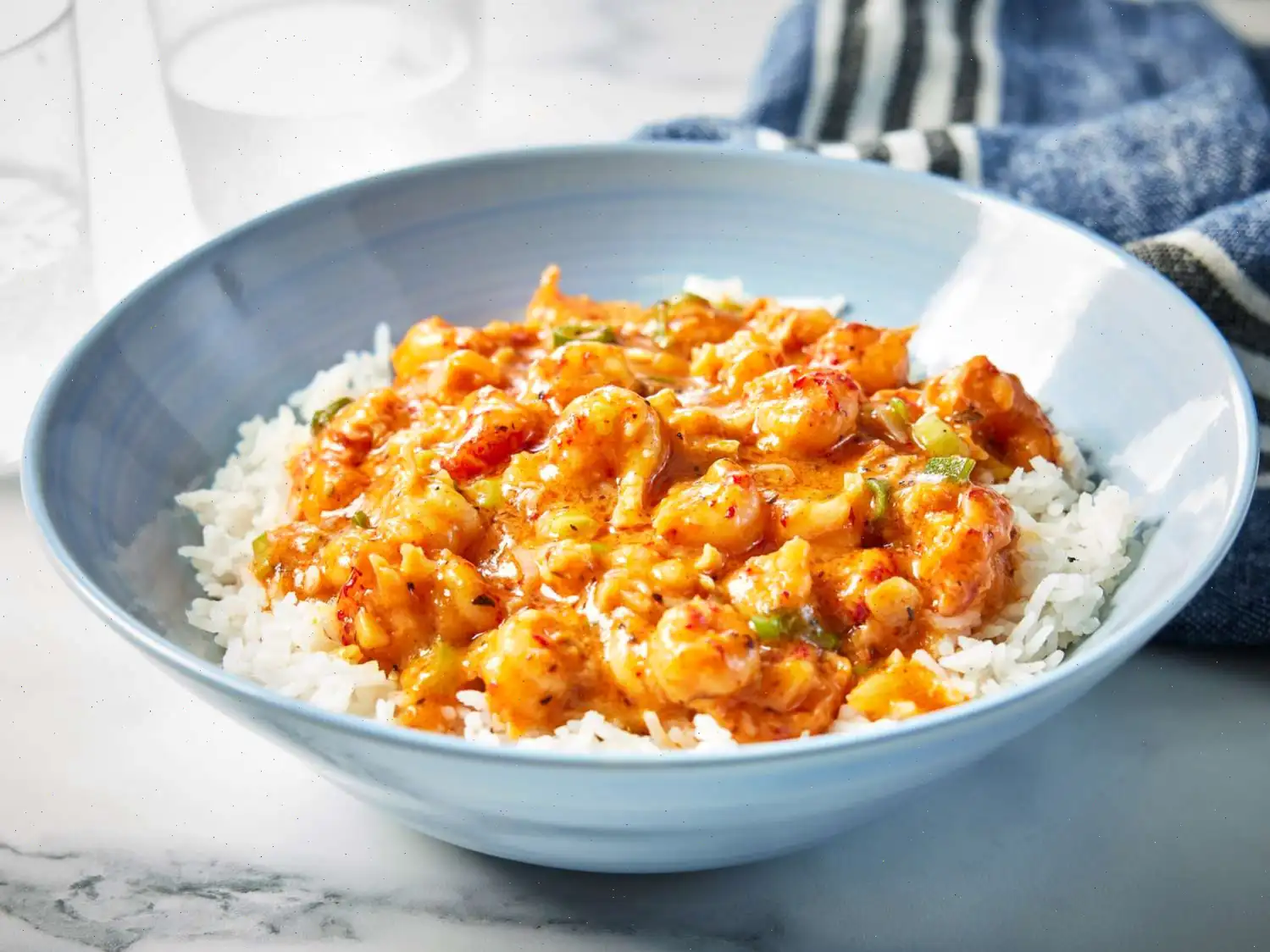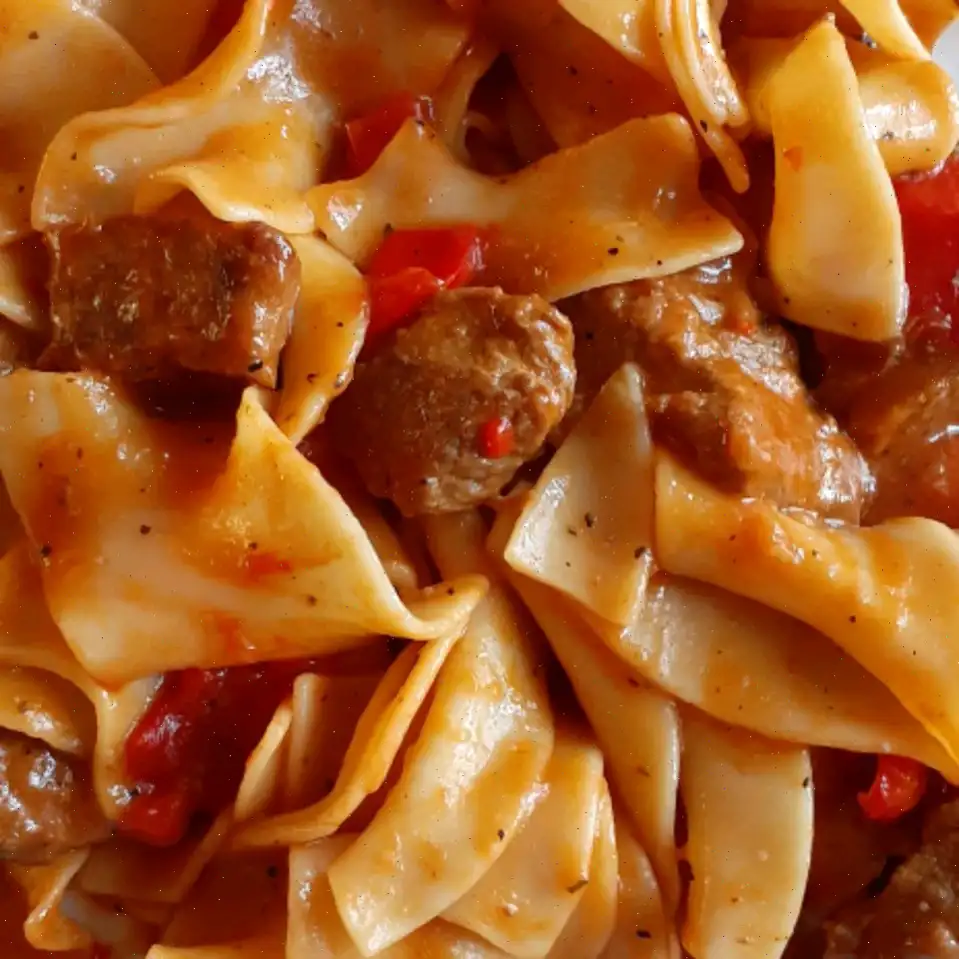
Pork and Chicken Adobo Recipe
Original Yield: 4 servings
Ingredients
- 1 pounds boneless pork loin roast, cut into 2-inch pieces
- 1 pounds boneless, skinless chicken thighs, trimmed and cut into 2-inch pieces
- 2 tablespoons crushed garlic
- 2 bay leaves, torn
- Freshly ground black pepper
- 1 cup white vinegar
- cup soy sauce
- 1 tablespoon vegetable oil
- 2 cloves garlic, smashed
Directions
- Place pork and chicken into a stock pot. Rub with crushed garlic and torn bay leaves. Season lightly with freshly ground black pepper. Coat with vinegar and soy sauce. Cover and marinate in the refrigerator for at least 2 hours or overnight.
- Transfer the meat and marinating liquid to a cast iron casserole or Dutch oven. Bring to a boil over medium heat, then reduce heat to a simmer. Cook for about 30 minutes, or until the meat is tender. If the sauce begins to dry out, add a little water to maintain moisture.
- Once the meat is tender, strain the liquid from the meat and set it aside. Discard the bay leaves.
- Heat 1 tablespoon of vegetable oil in a large skillet over medium-high heat. Brown the pork and chicken pieces on all sides. Reduce the heat and stir in the remaining 2 smashed garlic cloves. Cook and stir for another 2 minutes.
- Pour in the reserved cooking liquid and continue to simmer until the sauce slightly thickens. Serve hot.
Recipe Tip
To thicken the sauce, you can add diced chicken or pork liver for an extra layer of richness.
Nutrition Facts (per serving)
- Calories: 551
- Total Fat: 37g (47% Daily Value)
- Saturated Fat: 11g (55% Daily Value)
- Cholesterol: 186mg (62% Daily Value)
- Sodium: 2214mg (96% Daily Value)
- Total Carbohydrates: 4g (1% Daily Value)
- Dietary Fiber: 1g (2% Daily Value)
- Protein: 49g (98% Daily Value)
- Vitamin C: 6mg (6% Daily Value)
- Calcium: 50mg (4% Daily Value)
- Iron: 3mg (17% Daily Value)
- Potassium: 655mg (14% Daily Value)
Note: Percent Daily Values are based on a 2,000 calorie diet. Your daily values may be higher or lower depending on your individual calorie needs.

History and Origin of Adobo
Adobo is one of the most beloved dishes in Filipino cuisine, with roots dating back to the pre-colonial period. The word "adobo" comes from the Spanish word "adobar," meaning "to marinate" or "to season." While the Spanish colonizers are often credited with the dishs name, the method of marinating and slow-cooking meats in vinegar and spices predates their arrival in the Philippines. Early Filipino adobo variations were made with local ingredients, such as coconut milk and tamarind, long before soy sauce and vinegar became the standard. Adobo is traditionally made with pork, chicken, or beef, though variations using seafood or other meats are common across regions.
Regional Variations
Adobo is prepared and enjoyed across the Philippines, but regional differences exist due to the availability of local ingredients and personal preferences. In regions like Pampanga, adobo is known for being more savory, with a heavy use of soy sauce. In contrast, provinces like Batangas often use more vinegar, giving the dish a sharper, tangier taste. Additionally, in some regions, adobo may be cooked with coconut milk, turning it into a creamier version known as "adobo sa gata." While pork and chicken adobo is the most common combination, variations may include beef, duck, and even goat meat.
What Makes Pork and Chicken Adobo Unique?
What sets pork and chicken adobo apart from similar stews or braised dishes is the balance of salty, tangy, and savory flavors. The combination of soy sauce and vinegar creates a unique marinade that tenderizes the meat while infusing it with deep flavors. This contrasts with other Asian stews or braises, which may focus more heavily on sweetness or spice. While dishes like Chinese braised pork or Thai curries share similar cooking techniques, adobo stands out for its distinctive acidity from vinegar and the infusion of bay leaves, peppercorns, and garlic. The use of two types of meat, pork and chicken, in this adobo recipe offers a rich variety of textures and flavors, enhancing the dishs appeal.
Where Is Adobo Typically Served?
Adobo is a ubiquitous dish in Filipino homes, frequently served as a family meal during lunch or dinner. It is often accompanied by steaming white rice, which helps balance the rich, savory sauce. Outside the home, adobo is a popular offering in Filipino restaurants worldwide. Many Filipino gatherings, such as birthdays and holidays, feature adobo as a centerpiece dish. It is also commonly served in cafeterias and markets as a quick, hearty meal for workers or students. Whether served at a festive banquet or a humble family dinner, adobo is universally recognized as a comfort food that brings people together.
Interesting Facts About Adobo
- Adobo was named one of the "Top 50 Most Delicious Foods in the World" by CNN Travel in 2011.
- Although adobo is considered the unofficial national dish of the Philippines, every family has its own variation, passed down through generations.
- Adobo is highly versatile it can be made with almost any meat, including pork, chicken, beef, and even duck. Some creative versions include seafood and even vegetables like eggplant.
- In the Philippines, adobo is sometimes prepared using a pressure cooker, which drastically reduces the cooking time while still achieving tender meat and rich flavors.
- Though adobo is typically a savory dish, some versions include a touch of sugar to balance the sharpness of the vinegar, showcasing the dishs adaptability.
Conclusion
Pork and chicken adobo is more than just a dish; its a culinary symbol of the Philippines, rich in flavor and history. Its simplicity, combined with its depth of taste, makes it a standout in both Filipino cuisine and global food culture. Whether you're making it for the first time or cooking a familiar family recipe, adobo will always be a dish that invites exploration and enjoyment. Its versatility ensures that no two versions are exactly alike, but they all share the same comforting, tangy, and savory essence.
FAQ about Pork and Chicken Adobo Recipe
Comments
Raymond Davis
03/29/2023 04:22:39 AM
As a Filipino who loves to cook, I found this recipe for pork adobo in need of some adjustments. It's a straightforward dish that can be made in less than an hour. For my pork adobo, I prefer using pork loin steaks, whether sliced or left whole. I brown the pork in a skillet over medium-high heat until it's almost cooked through, and I find that I don't need to use oil for this step. In a small bowl, I combine 1/3 cup of soy sauce, 2 tablespoons of red wine vinegar, and 1 2/3 cups of water, then pour this mixture over the browned meat. I season generously with garlic powder and add 2 bay leaves to the sauce. I let it simmer uncovered over medium to medium-high heat, allowing the sauce to slowly infuse its flavor into the meat. You can choose to save some of the sauce to drizzle over the meat and steamed rice, or let it reduce. I've never found the need to use additional salt or pepper as the soy sauce provides enough seasoning. Marinating the meat is unnecessary, as the flavors develop beautifully during cooking. Overall, when prepared correctly, this adobo recipe can easily earn five stars and will surely be a hit with family and friends!








